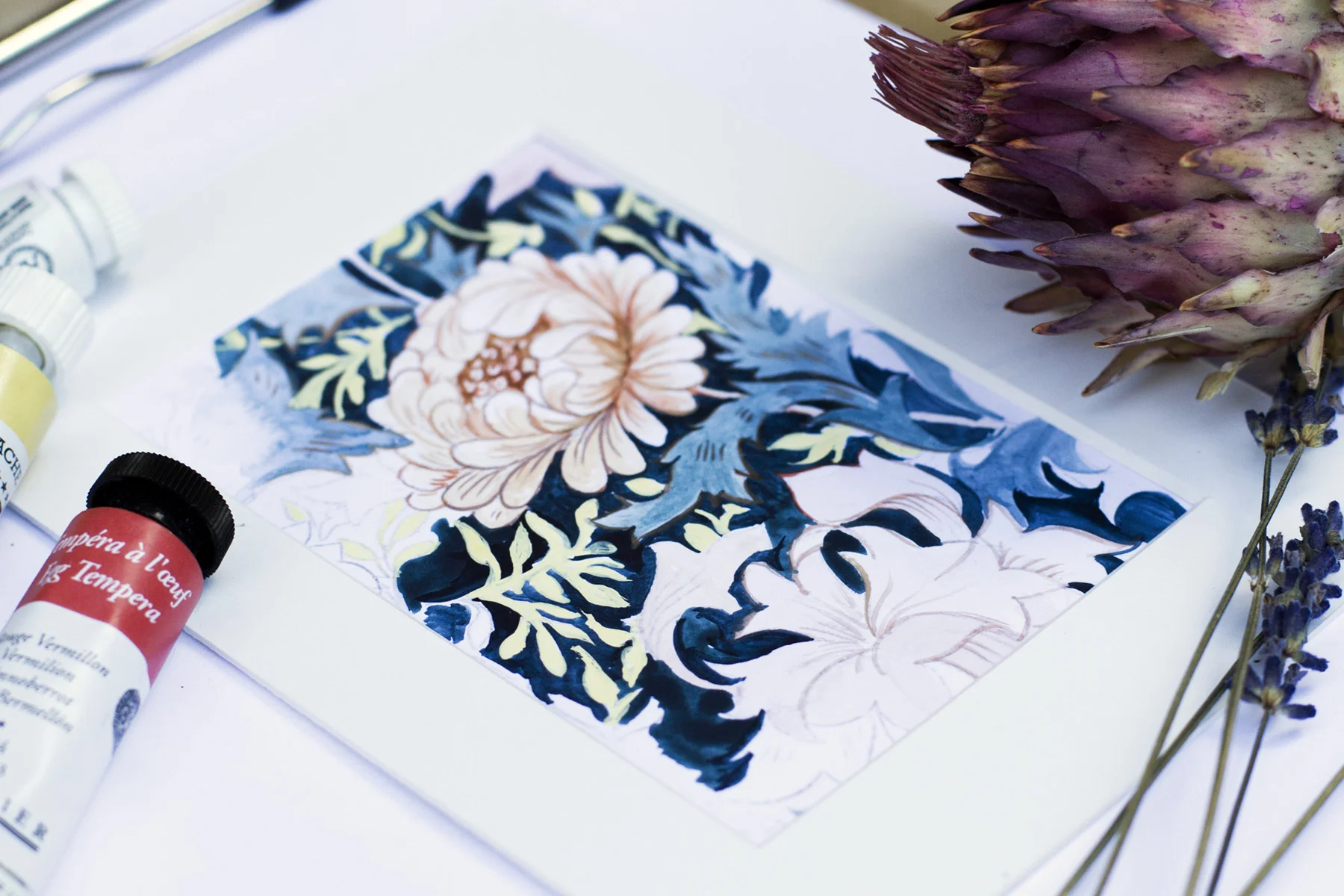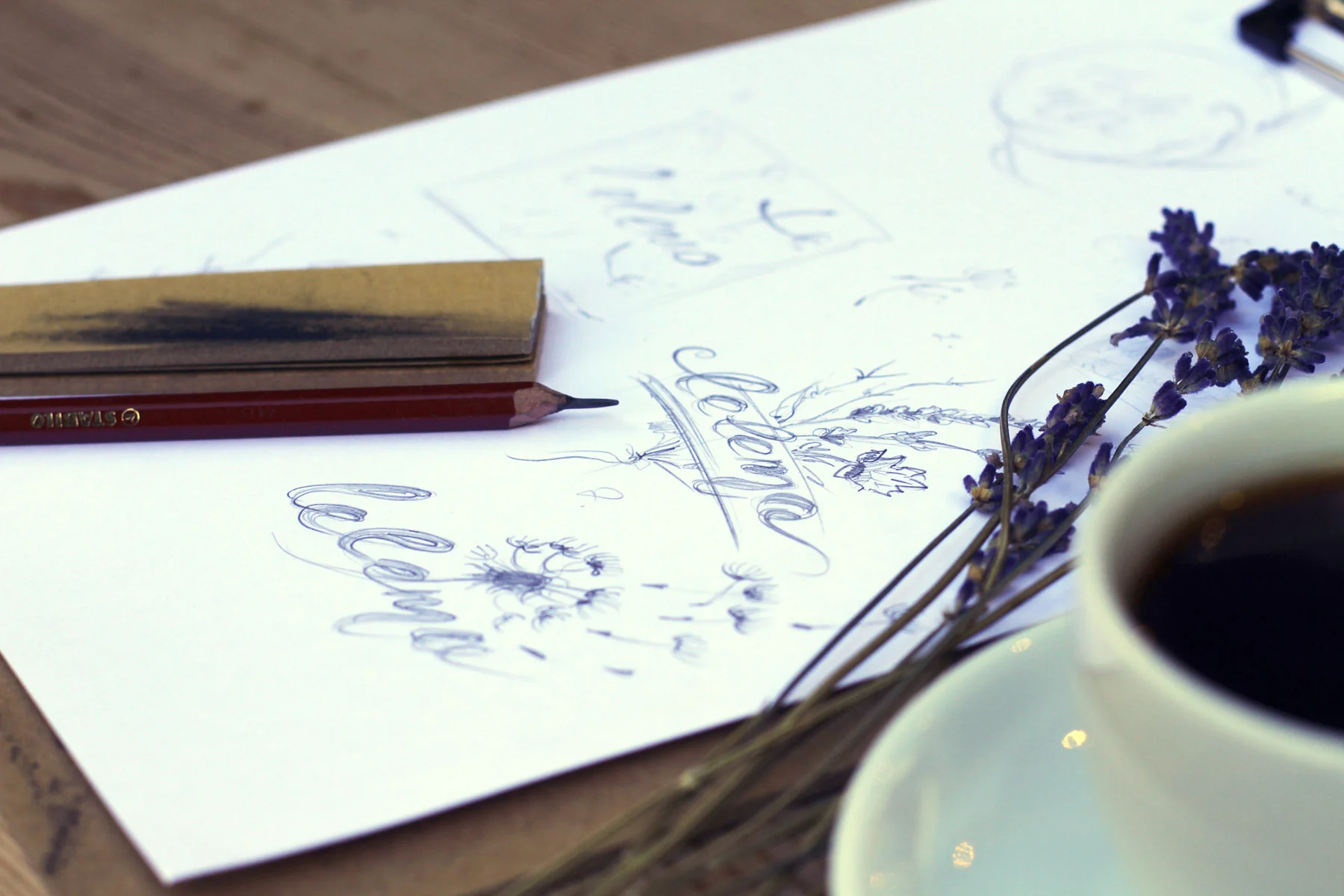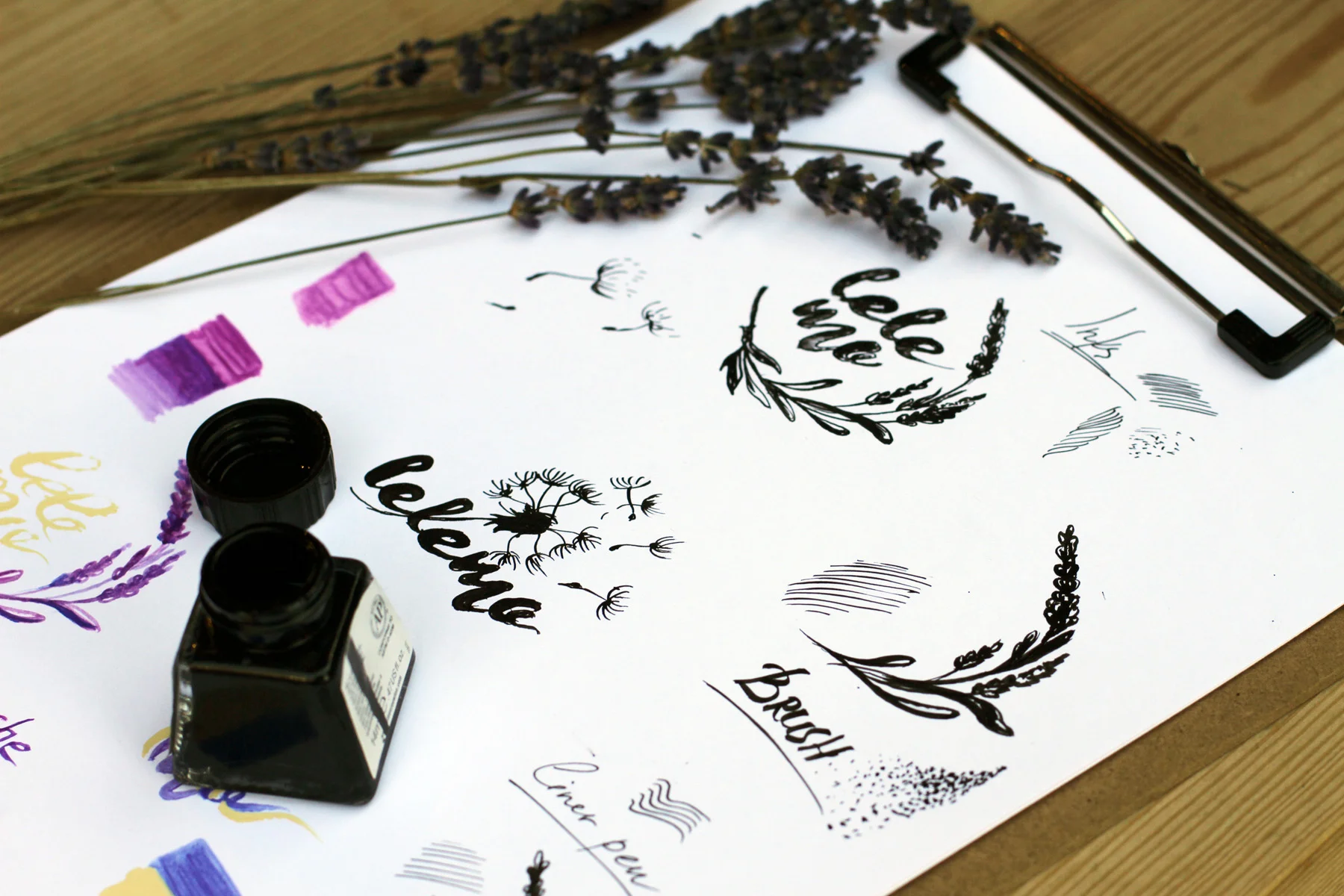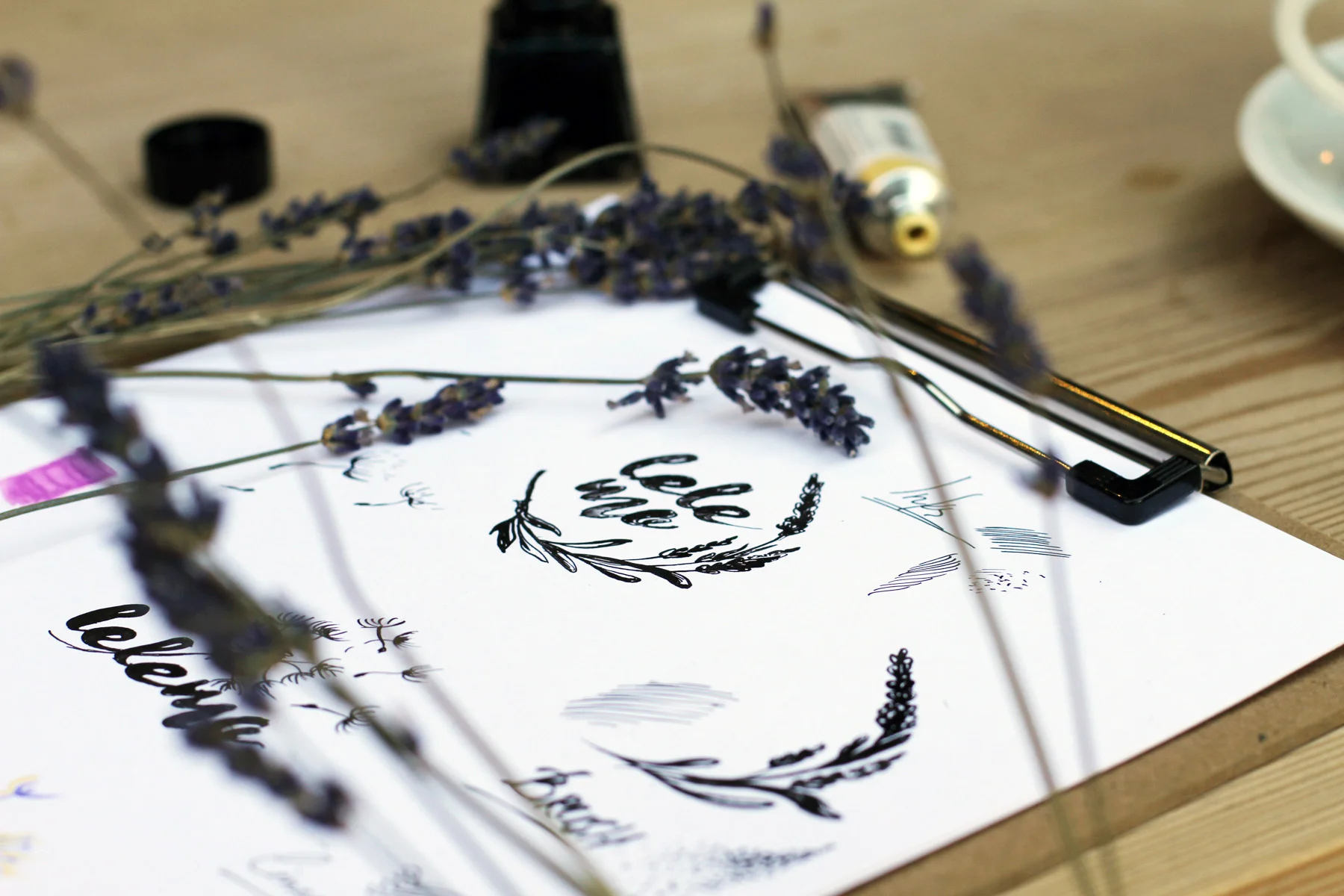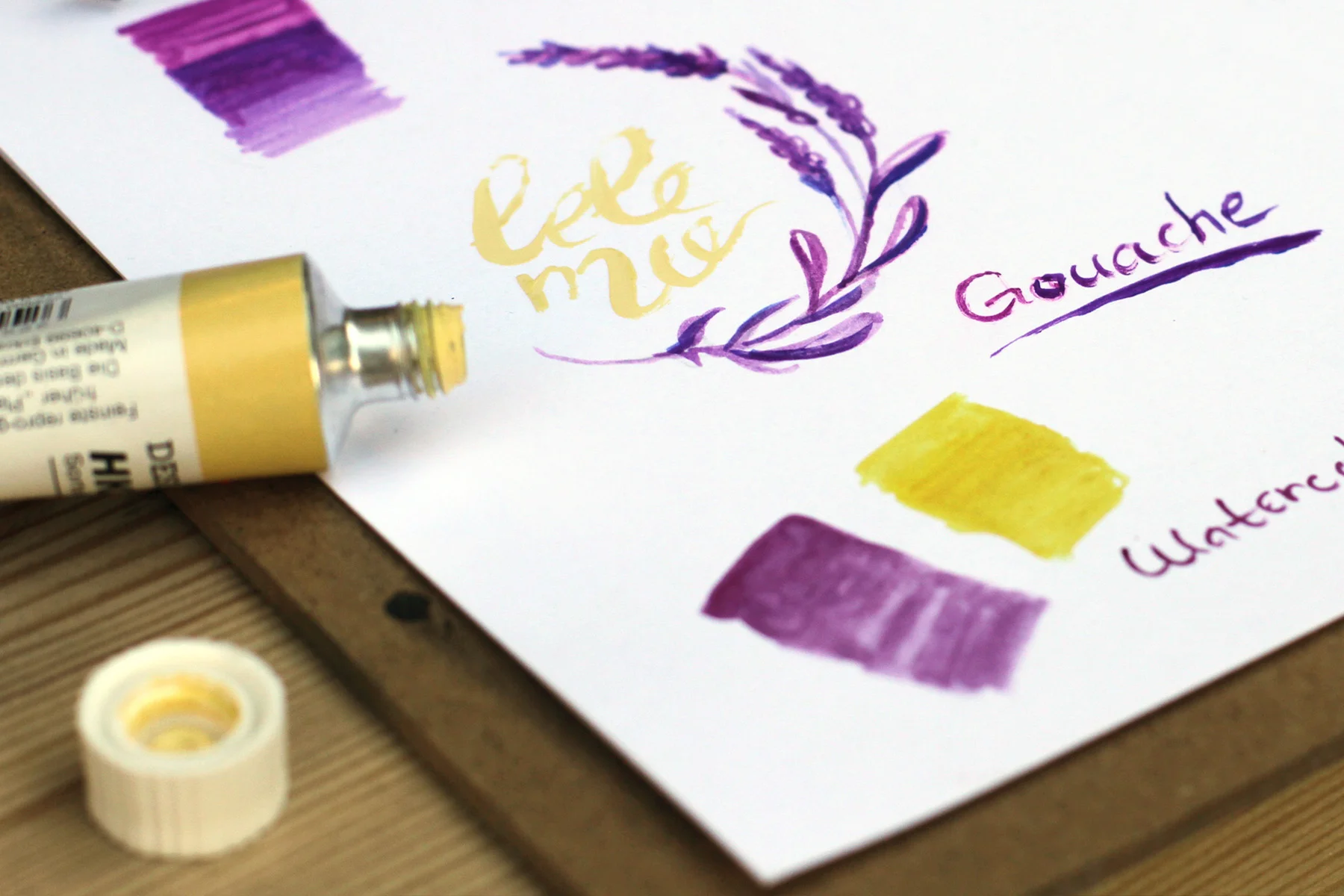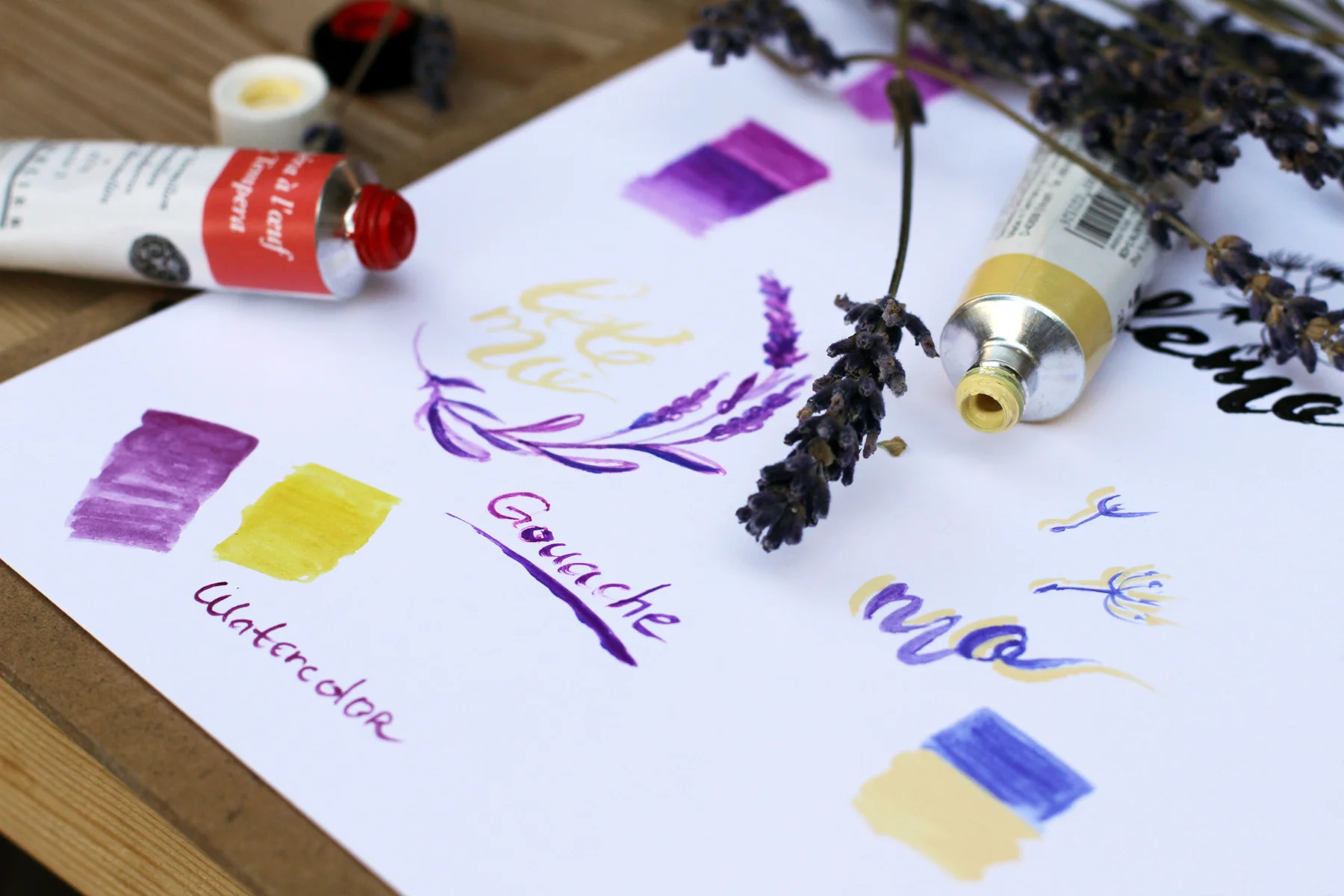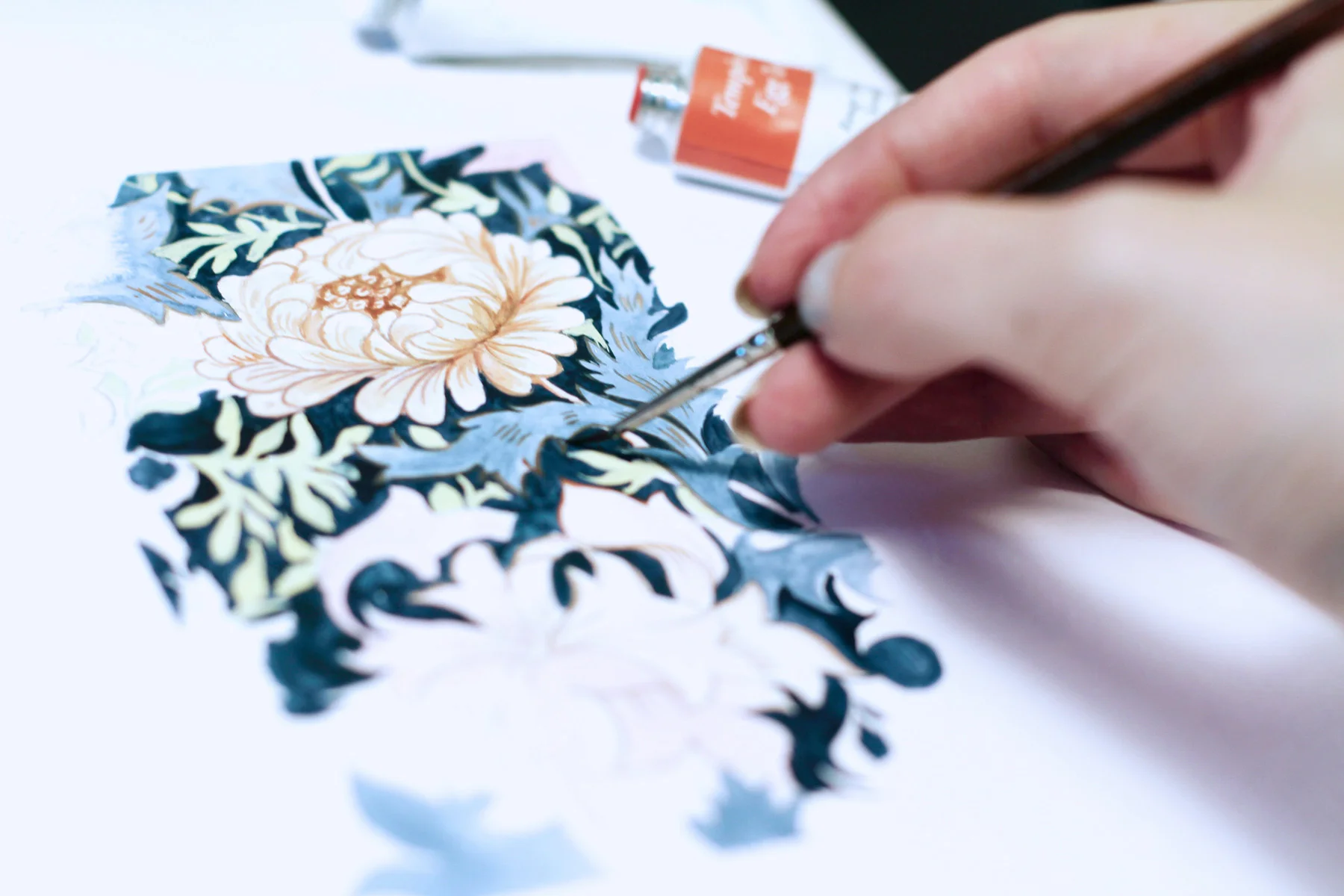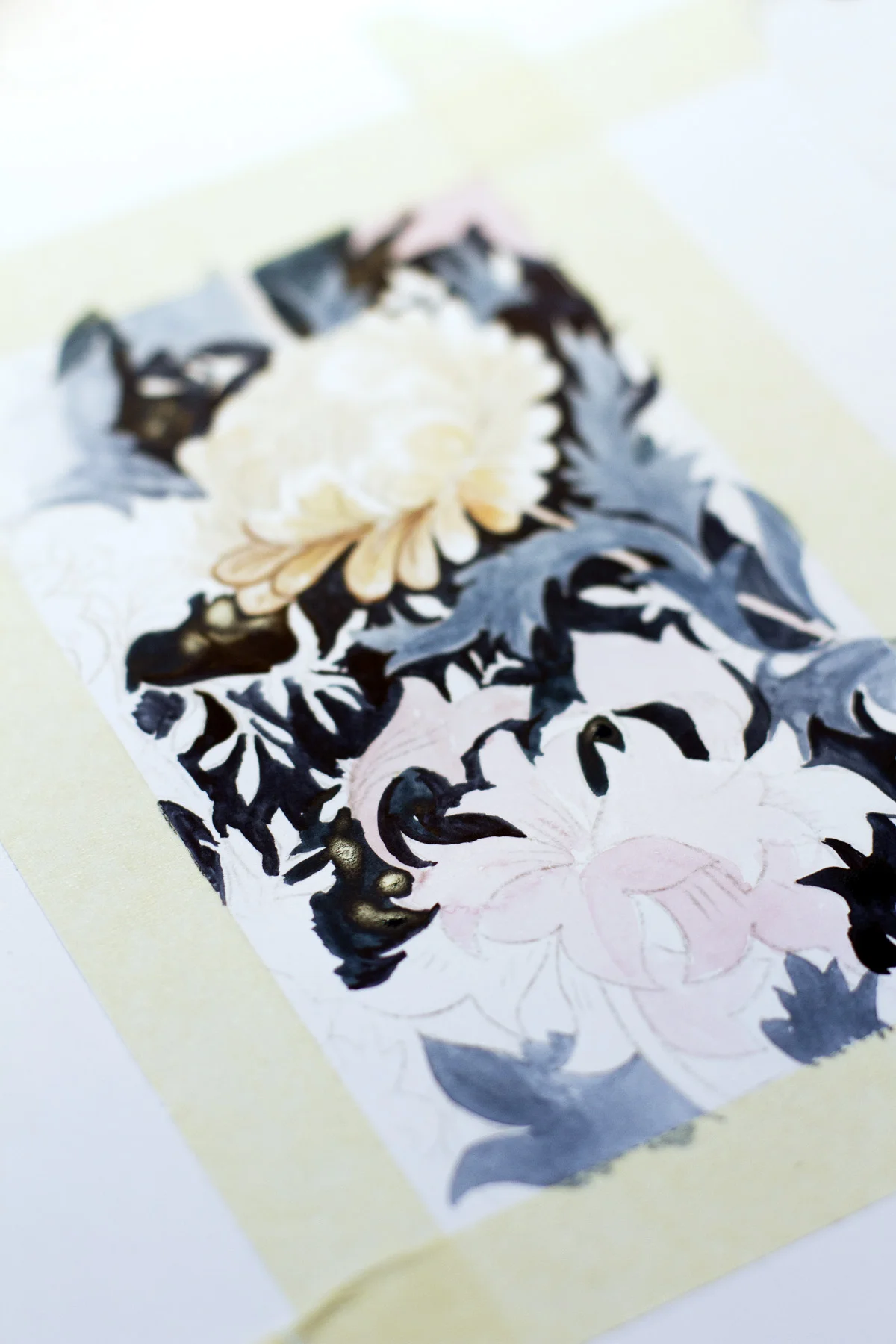As I’m often asked about what paper I use for my design and illustration projects I thought it’d be nice to make an in-depth introduction of my new and already constant friend—Bristol paper by Hahnemühle. With 20 pages of ultra-smooth but sturdy surface the Bristol paper is the perfect choice for design and illustration projects allowing working with dry and fluid drawing media at the same time.
Keep in mind that this is my personal opinion and refers to how I work, although I believe you’ll find it helpful. I combine traditional and digital techniques so considering the diversity of projects and strict deadlines Bristol is a wise choice.
I decided to show it “in the field”—logotype project for a small business company called Lelemo (natural handmade souvenirs). Lavender was an inspirational symbol and I started with pencil sketches directly on Bristol paper (while instantly inhaling the fresh lavender flowers aroma)
After several pencil sketches I determined the best one for this project. You can see the examples with pencil, classical nib pen, brush and inks.
Brush and inks
Liner pen
The process was smooth and I could switch the materials without worrying whether the paper could handle it. For most projects I use liners considering time spent and that nib pens can scratch the surface when working too hard.
Adding some color tryouts before the computer postproduction is a very relaxing stage, there is little pressure so I tried both gouache and watercolor. Both paints absorbed quickly and dried quickly.
If you're working in a traditional multi-layering technique I strongly advise the use of specific paper (for acrylics, sumi-e, watercolors etc.), but for mixed media illustration project Bristol is perfect.
Time for scan and vectorizing. The bright white color of the paper allows for the easy scanning and isolating of subjects without elaborate post processing so all the last steps are usually made directly into Adobe Illustrator.
Layering opportunities
A big surprise was with layering opportunities.
This is sneak peek of a watercolor and gouache project for my new Skillshare class I’m working on now. I just wanted to show how the paper holds the layers and you can surprisingly easily combine some elements of classical techniques with liners and whatever possible.
The only trouble I had was with a masking tape. After using lots of water, the tape removes the top layer of the paper. In illustration and design projects I don't often use the tape, but if you're working on for example floral watercolor painting with background, you'd better use some specific watercolor paper.
